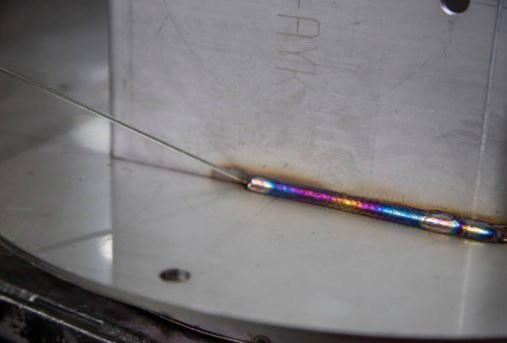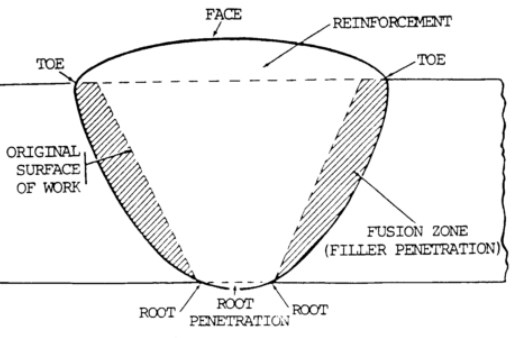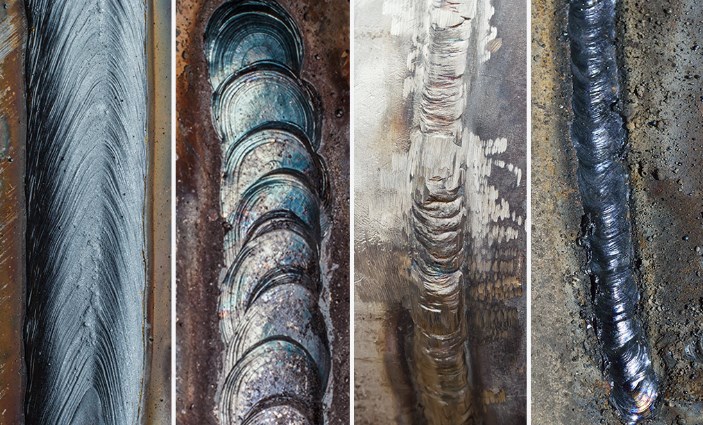In the world of welding, the term "welding bead" might sound simple, but its role and significance are pivotal to the craft. A welding bead is much more than a line of metal—it’s a testament to the skill, precision, and expertise of the welder. But what exactly are welding beads, and how do they function? Let's uncover the magic behind those metallic lines today.

I. Introduction to Welding Beads
1) Definition of Welding Beads:
A welding bead is a deposit of molten filler metal that forms a joint between two metal workpieces. As the filler metal melts, it cools and solidifies, creating a seam that bonds the workpieces together. The appearance, uniformity, and integrity of this bead are critical indicators of the weld's quality and the welder's proficiency.
2) Components of Welding Beads:

Face: The exposed surface of the bead that is visible after the welding process.
Root: The deepest part of the bead that penetrates into the base materials.
Toe: The edge where the bead meets the base metal, is crucial for ensuring smooth transitions and minimizing stress concentrations.
Leg: The distance from the root to the toe in fillet welds, is essential for measuring the weld size.
Welding beads can be classified based on their application and appearance. Here are some common types:

Stringer Beads: These are straight welds that move along the axis of the joint. They are used for their precision and ease of control.
Weave Beads: Created by moving the welding gun in a weaving pattern, these beads are wider and often used for filling gaps or covering larger areas.
Overlap Beads: Formed when successive beads overlap each other, providing additional strength and coverage.
II. Functions of Welding Beads
1) Ensuring Structural Integrity:
The primary function of a welding bead is to ensure the structural integrity of the joint. The bead must penetrate adequately into the base materials to create a strong bond. The bead's strength determines the welded structure's overall durability and reliability.
2) Facilitating Load Transfer:
In welded structures, loads and stresses are transferred through the welds. A well-formed bead ensures that these loads are evenly distributed across the joint, preventing localized stress concentrations that could lead to failure.
3) Enhancing Aesthetic Appeal:
While functionality is paramount, the appearance of welding beads also matters, especially in visible structures. Uniform, smooth beads are often considered a mark of quality craftsmanship, reflecting the welder's skill and attention to detail.
4) Preventing Corrosion:
Properly executed welding beads also play a role in preventing corrosion. A uniform bead with good penetration minimizes crevices and gaps where moisture and contaminants can accumulate, thereby enhancing the longevity of the welded structure.
III. Techniques for Creating High-Quality Welding Beads
1) Proper Heat Control:
Controlling the heat input is crucial for creating high-quality welding beads. Excessive heat can cause the bead to burn through the base material, while insufficient heat may result in poor penetration and weak joints. Balancing the heat input ensures a strong, consistent bead.
2) Consistent Speed and Movement:
The welder's speed and movement significantly impact the bead's appearance and integrity. A steady hand and consistent speed help in creating uniform beads with smooth transitions. Weaving techniques can be employed for wider beads, while stringer beads require a straight, even motion.
3) Appropriate Electrode Selection:
Choosing the right electrode for the material and welding process is essential. Electrodes vary in composition, diameter, and coating, each suited for specific applications. The correct electrode ensures good arc stability, proper penetration, and minimal spatter.
4) Clean Work Environment:
A clean work environment is vital for producing high-quality welding beads. Contaminants such as oil, rust, and dirt can compromise the weld, leading to defects like porosity and inclusions. Proper cleaning of the workpieces before welding ensures a stronger bond and better bead appearance.
5) Utilizing Advanced Welding Machines:
Modern welding machines, such as those from Megmeet, offer advanced features that enhance the quality of welding beads. These machines provide precise control over welding parameters, consistent power delivery, and innovative technologies that aid in producing superior welds.
IV. Common Defects in Welding Beads and How to Avoid Them
Porosity: Porosity occurs when gas bubbles become trapped in the weld metal, creating voids that weaken the bead. To avoid porosity, ensure the workpieces and electrodes are clean and dry, use the appropriate shielding gas, and maintain proper welding technique.
Cracking: Cracking can occur due to excessive heat, rapid cooling, or residual stresses in the weld. Preheating the base material, controlling the cooling rate, and using proper welding techniques can help prevent cracking.
Undercut: An undercut is a groove along the toe of the bead, which can weaken the joint. It is caused by excessive heat or incorrect welding angle. To avoid undercut, use proper heat settings and maintain the correct angle and speed while welding.
Spatter: Spatter consists of small metal droplets that splash out of the weld pool, creating a rough, uneven bead. Using the correct welding parameters, maintaining a stable arc, and using an anti-spatter spray can minimize spatter.
Incomplete Fusion: Incomplete fusion occurs when the weld metal does not properly bond with the base material or previous weld layers. Ensuring adequate heat input, proper electrode angle, and clean workpieces can help achieve complete fusion.
V. Role of Megmeet Welding Machines in Creating Perfect Welding Beads
Megmeet welding machines are designed to meet the demands of modern welding applications, providing advanced features that enhance the quality of welding beads. Some key features of Megmeet welding machines include:
Advanced Control Systems: Megmeet machines are equipped with an expert welding database that allows precise adjustment of welding parameters, ensuring optimal bead formation.
Consistent Power Delivery: Stable power output maintains a consistent arc and bead appearance. Megmeet machines deliver reliable power, reducing the likelihood of defects.
Innovative Technologies: Features like pulse welding, synergic control, and adaptive feedback help produce smooth, uniform beads with minimal defects.
User-Friendly Interface: Easy-to-use controls and intuitive interfaces make it simple for welders to set up and operate Megmeet machines, enhancing productivity and reducing errors.
VI. Conclusion
Welding beads play a critical role in the strength, durability, and appearance of the welded structure. Grasp their types, functions, and techniques for creating high-quality beads is essential for any welder. Proper heat control, consistent speed, appropriate electrodes, and a clean work environment ensure excellent welding beads. What's more, using advanced welding machines like Megmeet can further enhance your welding quality and efficiency.
Related articles:
1. How to Achieve Seamless Welds?
2. Internal and External Weld Seam Problems & Solutions of Pipeline
3. Seamless Steel Pipe Welding Technology (process, materials, etc.)
4. Mastering TIG Welding Polarity: PRO Tips for Perfect Welds
5. 9 Maintenance Problems that Cause Bad Welds






